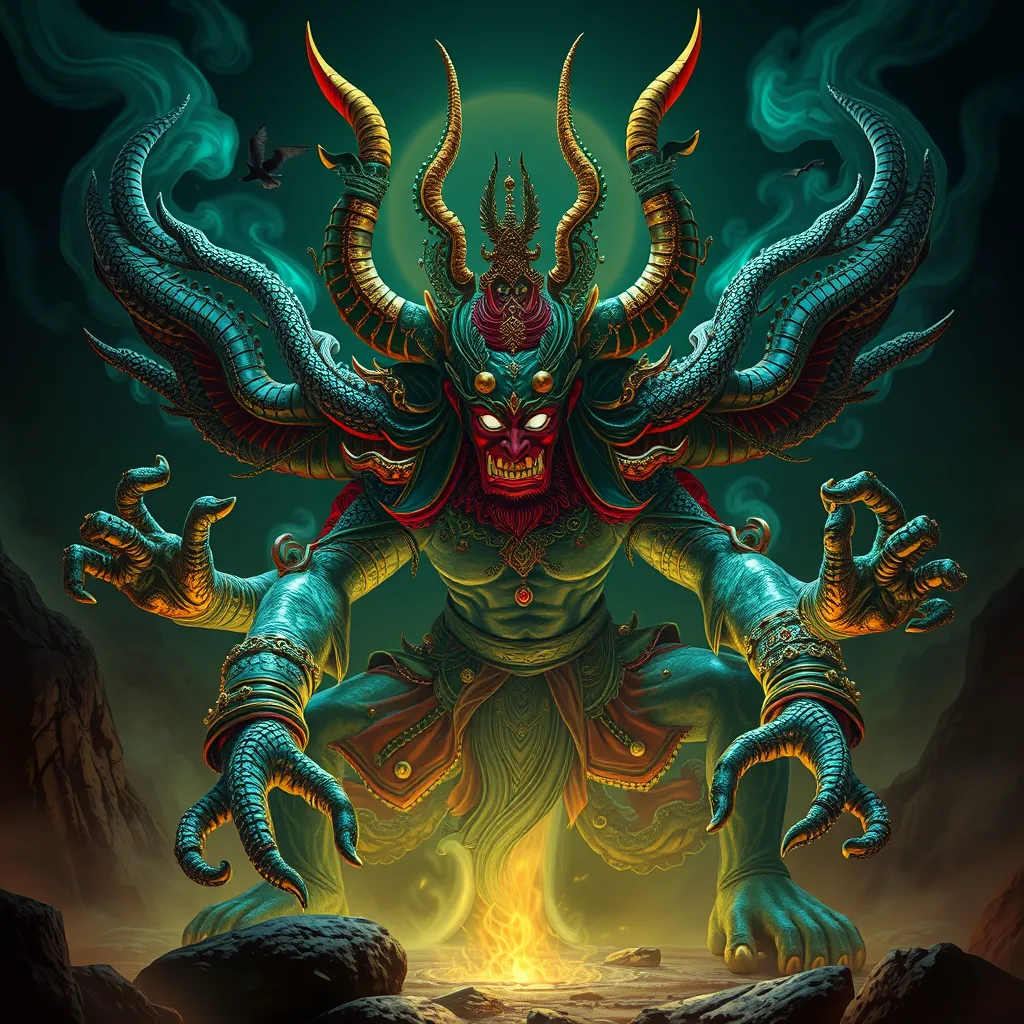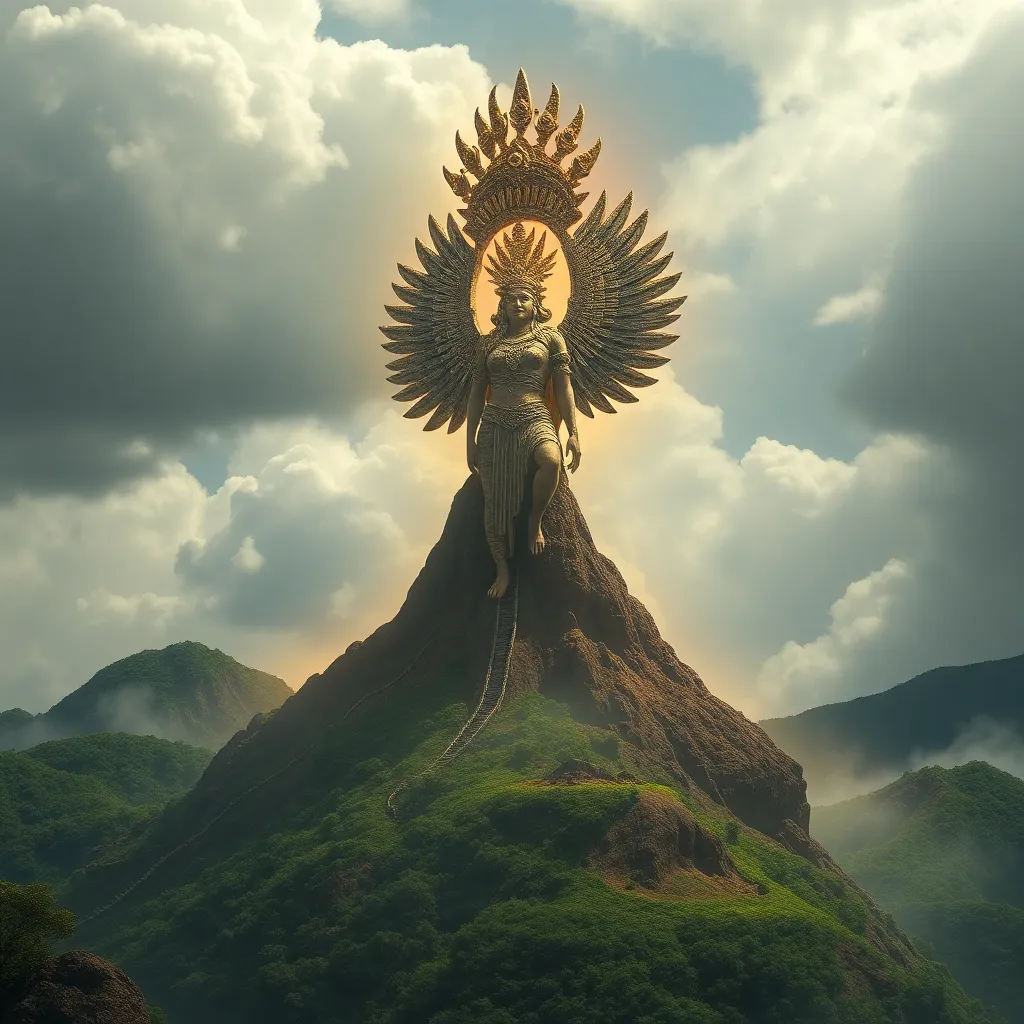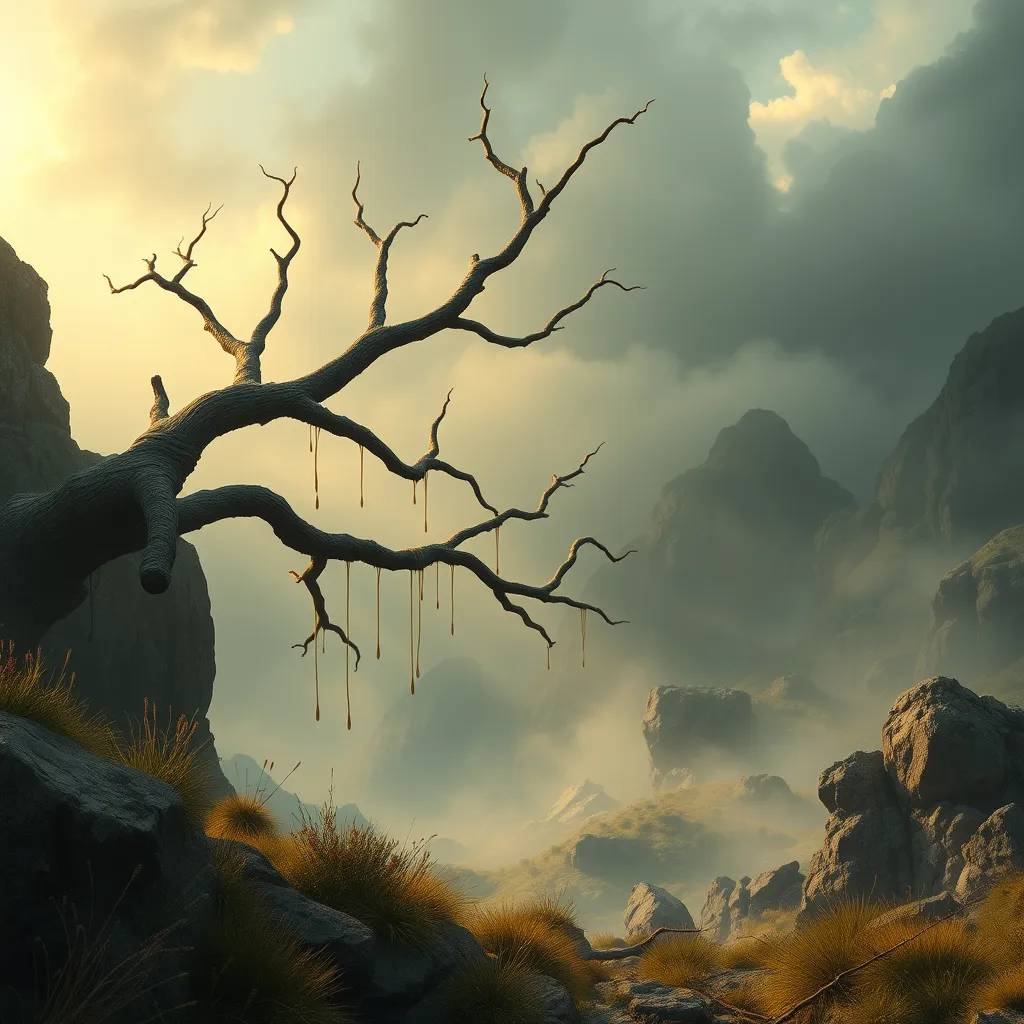The Rakshasa in Thai Mythology: Guardians of the Underworld
I. Introduction
Thai mythology is a rich tapestry woven with tales of gods, demons, and spirits that reflect the beliefs and values of Thai culture. Among these mythical beings, the Rakshasa holds a significant place as both a protector and a potential threat. Understanding the Rakshasa provides insight into the complexities of Thai folklore and the duality of its characters.
The term “Rakshasa” originates from ancient Hindu texts, where these beings are often depicted as powerful, shape-shifting demons. In Thai mythology, they have evolved into guardians of the underworld, embodying both protective and malevolent traits. Studying the Rakshasa within the context of Thai folklore not only enhances our understanding of Thai culture but also highlights the intricate blend of Hindu and Buddhist influences in Southeast Asia.
II. Origins of the Rakshasa in Southeast Asian Beliefs
The origins of the Rakshasa can be traced back to Hindu mythology, where they are described as fierce, supernatural beings often in conflict with the gods. In these ancient texts, Rakshasas are known for their ability to shape-shift and possess various magical powers.
As Hinduism spread throughout Southeast Asia, the concept of the Rakshasa adapted and transformed in different cultural contexts, particularly in Thailand. In Thai culture, Rakshasas are integrated into local beliefs, often depicted as guardians of the underworld, a role that emphasizes their protective qualities.
Furthermore, the influence of Buddhist teachings has shaped the perception of Rakshasas, presenting them as beings who, despite their fearsome nature, can also serve important roles within the cosmic order. This interplay between Hindu and Buddhist beliefs is essential to understanding the multifaceted nature of the Rakshasa in Thai mythology.
III. Characteristics and Attributes of Rakshasa
Rakshasas in Thai folklore are depicted with a variety of physical characteristics, often portrayed with exaggerated features such as sharp fangs, elongated limbs, and vibrant skin tones. This diversity in representation highlights the complexity of their nature.
- Shape-shifting: One of the most notable traits of Rakshasas is their ability to change form, allowing them to blend into human society or take on fearsome appearances.
- Magical Abilities: They possess a range of magical powers, which can be used for both protection and malice.
- Dual Nature: Rakshasas embody a duality; they can be protectors of the underworld or malevolent beings that challenge the divine order.
In Thai culture, Rakshasas symbolize the balance between good and evil, reflecting the complexities of human nature and the moral dilemmas faced in life.
IV. The Role of Rakshasa as Guardians of the Underworld
The underworld, or “Naraka,” in Thai mythology is a realm where souls are judged and undergo purification. Rakshasas play a crucial role as guardians of this domain, ensuring that the souls of the deceased are protected and that the order of the underworld is maintained.
As protectors of the realm of the dead, Rakshasas are believed to guide souls through their journey, preventing malevolent spirits from interfering. This protective role is often reinforced through various rituals and beliefs surrounding funerary practices in Thailand.
- Rituals: Offerings and prayers are made to Rakshasas during funerals to ensure safe passage for the deceased.
- Beliefs: It is believed that invoking the Rakshasas can help ward off evil spirits during this vulnerable time.
V. Rakshasa in Thai Literature and Arts
The presence of Rakshasas is prominent in traditional Thai literature, most notably in the “Ramakien,” the Thai version of the Indian epic “Ramayana.” In this epic, Rakshasas are depicted as formidable adversaries to the hero Rama and his allies.
In addition to literature, Rakshasas have influenced various forms of Thai arts, including:
- Dance: Traditional Thai dance often incorporates Rakshasa characters, showcasing their dramatic and powerful movements.
- Theater: Thai theater performances, such as Khon, feature elaborate costumes and portrayals of Rakshasas, highlighting their importance in cultural narratives.
- Visual Arts: Paintings and sculptures often depict Rakshasas in battle scenes, emphasizing their role in the cosmic struggle between good and evil.
In contemporary culture, the interpretation of Rakshasas continues to evolve, finding their way into popular media, such as films and literature, where their complex nature is explored further.
VI. The Duality of Rakshasa: Protectors or Threats?
The dual nature of Rakshasas presents a fascinating paradox: they are both guardians and potential threats. This duality is illustrated in various stories and myths, where Rakshasas exhibit fierce loyalty to their roles as protectors while simultaneously posing challenges to heroes and deities.
Some stories highlight their protective qualities, while others depict them as obstacles that heroes must overcome. This complexity influences societal views and cultural narratives, prompting reflections on the nature of good and evil.
VII. Rakshasa in Modern Thai Society
Despite the influence of globalization and modernization, the Rakshasa remains relevant in contemporary Thai society. Many traditional beliefs and practices surrounding Rakshasas continue to be observed, particularly during funerals and cultural festivals.
The rise of popular media has also contributed to the reimagining of Rakshasas, presenting them in new light that appeals to younger generations. This ongoing dialogue between tradition and modernity ensures that the legacy of Rakshasas endures in contemporary Thai folklore.
VIII. Conclusion
In summary, the Rakshasa stands as a pivotal figure in Thai mythology, embodying both protective and malevolent traits. Their origins in Hindu mythology, adaptation within Thai culture, and continued relevance in modern society reflect the richness of Southeast Asian beliefs.
The enduring legacy of the Rakshasa invites appreciation for the cultural heritage surrounding these beings, encouraging a deeper understanding of the intricate narratives that shape Thai folklore. As society continues to evolve, the stories of the Rakshasa will undoubtedly remain a vital part of Thailand’s cultural landscape.



